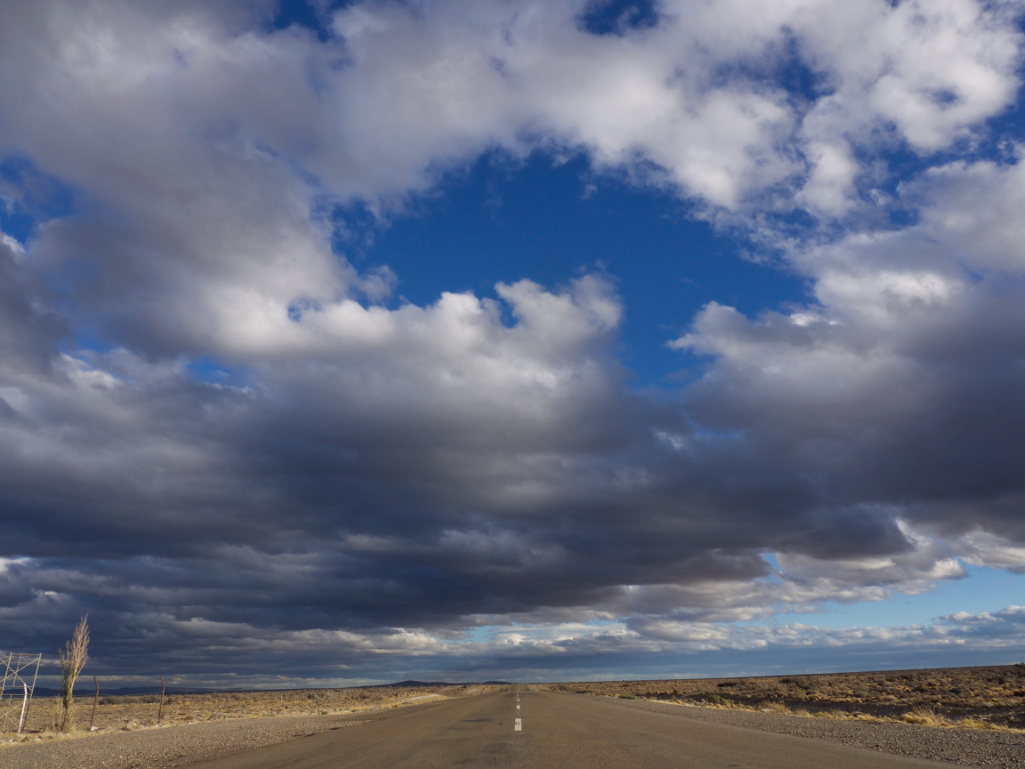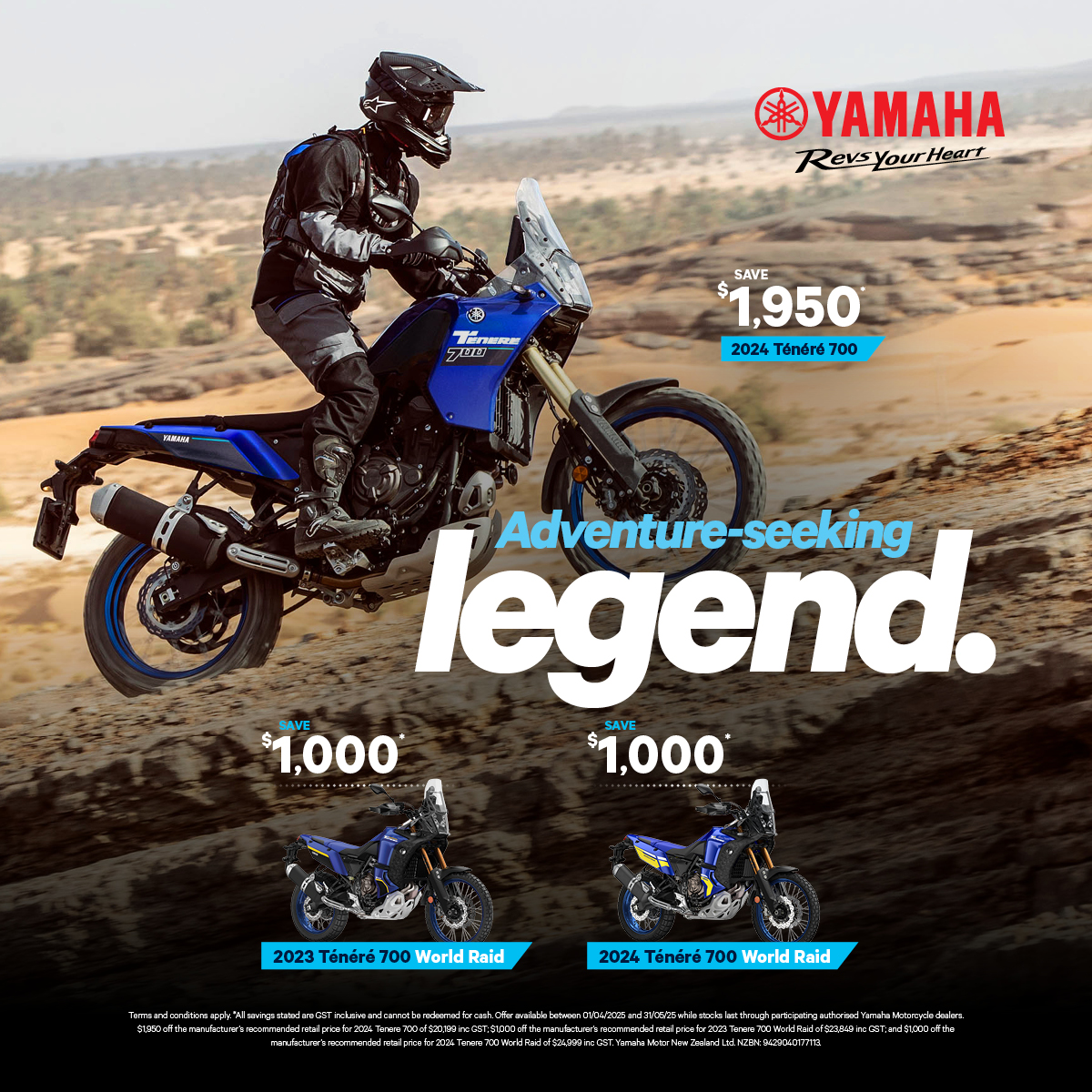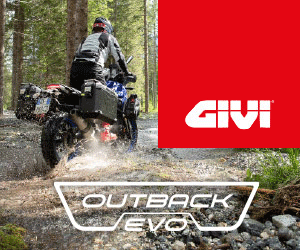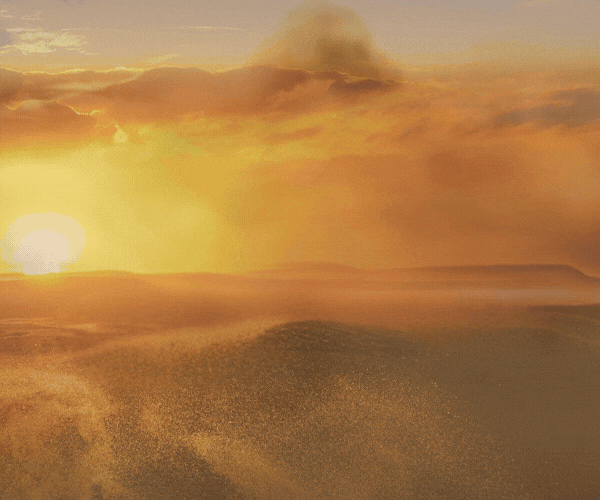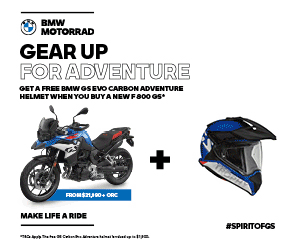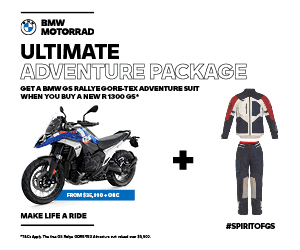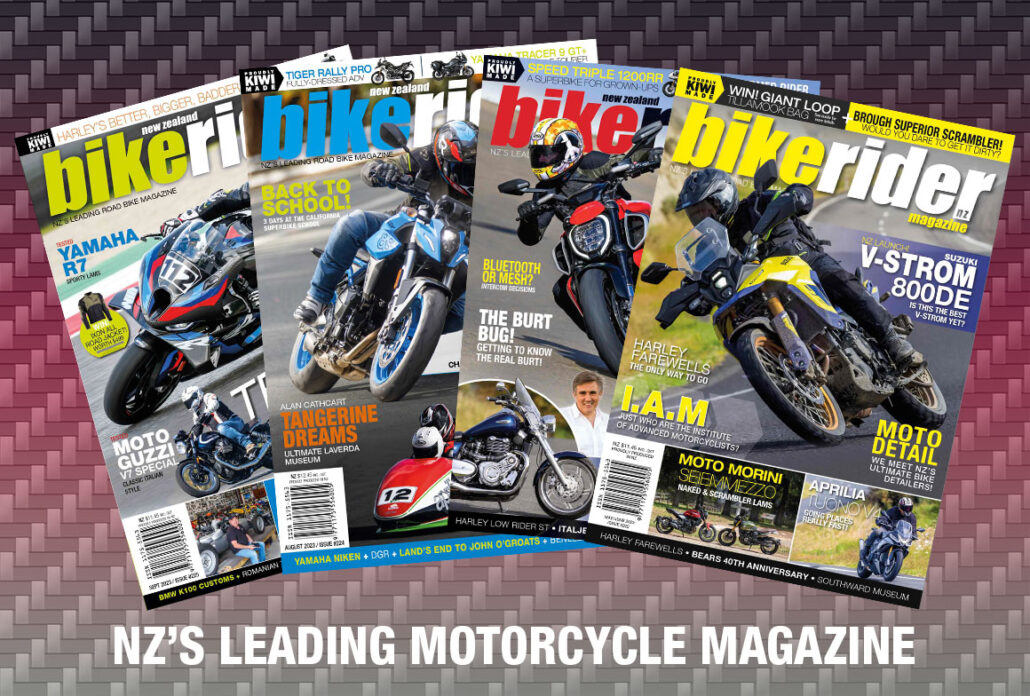The world’s greatest adventure rider Nick Sanders reveals how to ride further and faster than you ever thought possible…
Words: Oscar Kornyei Photos: Nick Sanders & Oscar Kornyei
Falling asleep on the petrol tank while barrelling down some unfamiliar road at 160km/h isn’t the ideal way of reaching a ripe old age.
Neither is forcing yourself to ride 2000 clicks a day in a torrential downpour in a far-flung corner of the globe.
But for 58-year-old Nick Sanders, who set the world record for circumnavigating the world (32,070km) in 31 days and 20 hours, it’s all in a day’s work.
Having ridden around the planet nine times so far at breakneck speed – including twice on a bicycle – he’s the man who put ‘extreme’ into ‘adventure riding’.
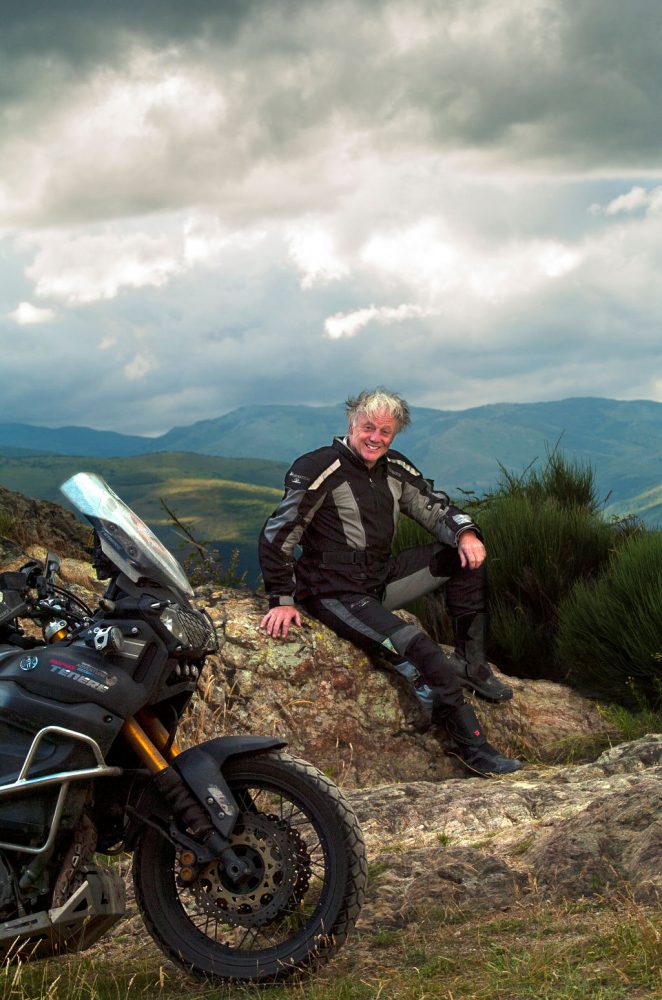 “I wasn’t the first person to ride around the world, but I’m certainly the first to go around it fast,” says the adventurer who makes Ewan McGregor’s journeys look like a teddy bear’s picnic.
“I wasn’t the first person to ride around the world, but I’m certainly the first to go around it fast,” says the adventurer who makes Ewan McGregor’s journeys look like a teddy bear’s picnic.
“Having said that, I honestly believe anybody could do this if they really wanted to.
“But you’ve got to be prepared to give up almost everything. Before I start every journey I ask myself if I were to die as a consequence of what I’m about to do, would I still do it. The answer is always yes.”
Nick’s clocked up over 1.6 million kilometres through the most inhospitable places on the planet – from the Sahara to Mongolia.
He’s also ridden around Australia seven times, the length of the Americas eight times and holds the record for a double transit from Alaska to Ushuaia in Argentina (the southernmost city in the world) and back in 46 days.
Amazingly, Nick whittled his previous circumnavigation record down to 19 days and four hours aboard a 2005 Yamaha R1. It’s his favourite planet blaster (light, fast and agile).
His current bike is a Super Ténéré, but it will be replaced by a soon-to-be-announced Ténéré-style semi-off-roader with a 700cc engine.
Obviously one needs meticulous preparation, lots of puncture repair bungs and lucky charms… Nick carries a bear tooth he bought from a mate of his in Yukon and three wedding rings: his late mum and dad’s and his own – which is a brass plumbing connector!
But to sort the men from the boys and the victors from the vanquished, here are Nick’s top 10 tips for those of us who yearn to undertake an extreme adventure ride.
Whether you wish to make the 1000km blast from Nelson to Invercargill less tiring or conquer the 20,000km from Auckland to Casablanca, here are a few nuggets from the world’s most hardened adventure rider that will help to make you ride better – further and faster.
Leave Your Undies at Home
 We’ve all made the mistake of packing either too many or not enough undies to last a trip. Nick’s solution of not wearing any at all saves valuable space and reduces laundry.
We’ve all made the mistake of packing either too many or not enough undies to last a trip. Nick’s solution of not wearing any at all saves valuable space and reduces laundry.
Instead, he wears lycra cycling leggings. Unlike your favourite pair of cotton boxer shorts, they offer extra padding and soak up sweat.
“Like a heated vest or gloves, they also keep the heat in – which is great for keeping your core body temperature up during a cold night,” Nick says.
Beds Are For Sissies
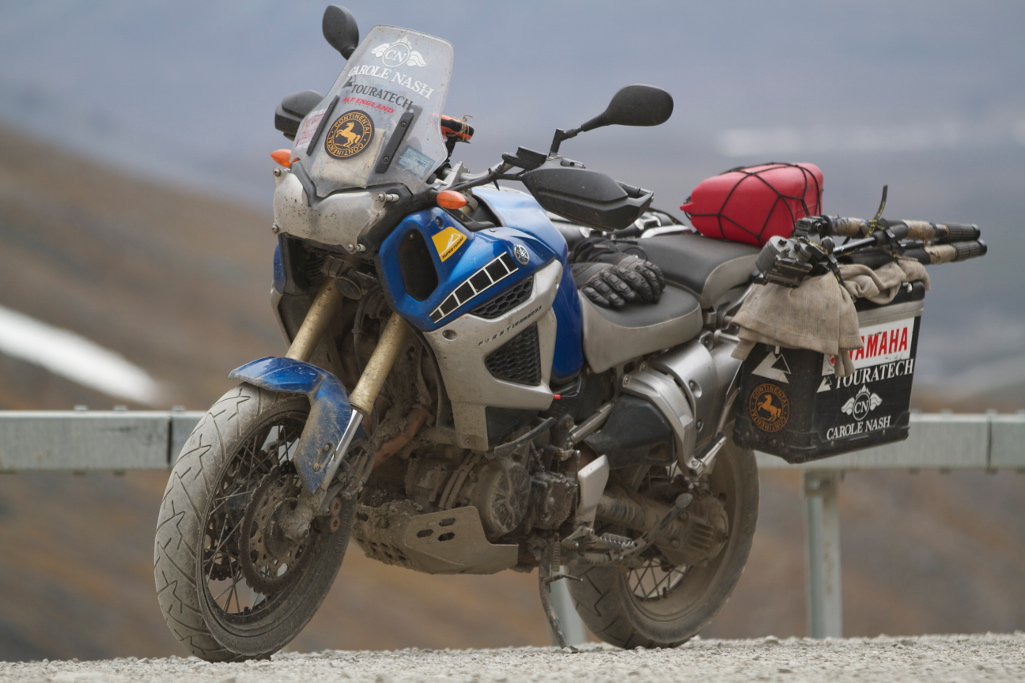 Nick’s secret for getting serious miles under his belt is to take a 15-minute power nap every four hours.
Nick’s secret for getting serious miles under his belt is to take a 15-minute power nap every four hours.
“It’s like method acting – you don’t actually get off the bike when you stop,” he says.
“I put the sidestand down and sleep on the bike – with my helmet on. You’re in the groove – still connected to the bike, with feet on the footpegs and head resting on the handlebar.
“You can time your nap in your mind and when you wake up you’re immediately clothed. You don’t have to fiddle with anything. You start the bike and you’re away within five seconds.
“During my 19 day ride around the world (aptly called the Journey Beyond Reason), apart from two to three very short stays in a hotel, I only took a 15 minute break every four hours for the whole journey.”
Speed Ain’t Everything

Even though Nick’s fastest-ever speed was 240km/h – along the Stuart Highway in the Northern Territory – it’s the hare-versus-tortoise mentality that’s reaped rewards.
“Speed isn’t always important because the faster you go the more physical and psychological energy you use as you’re concentrating more,” he says.
“It’s okay for an hour – which is a long time in anyone’s motorcycle life – and even harder when you’re riding 15 or 18 hours a day.
“You need to ride at a speed which is sustainable and which you know that your mind and physique can cope with hour-after-hour.
“Of course you’re still riding quickly – maybe up to 150km/h, but it’s not 220km/h – which is a ridiculous speed. Anyone who says they’re not stressed at that speed isn’t telling the truth.
“Anyone who’s realistic about speed will know that speed isn’t the killer it’s supposed to be – it’s other elements like fatigue, visibility and a rider’s motorcycling history.
“Short attention span on a motorcycle is a killer, so when I’m on a bike I think about nothing else but what I’m doing and focus only on that.
“You can start not to see things by riding too quickly. The vanishing point will rush at you too fast.
“It’s the opposite of target fixation – where you look at a stone on the road and you hit it. It’s like not seeing anything at all.
“Lamp posts or trees that rush past you give an indication of how fast you’re going, but when you haven’t got that in a bland environment like the tundra, along the Alaskan Highway, you’ll easily be riding faster and faster without realising it – touching 160km/h when you really shouldn’t be.”
A Sportsbike Gives You Street Cred
 Nick – who has also sailed canal boats to Russia and flown hot air balloons – says it’s important to be as invisible as possible.
Nick – who has also sailed canal boats to Russia and flown hot air balloons – says it’s important to be as invisible as possible.
“Granted, it’s quite difficult as you’re a white man on a big bike packed to the gunwales with expensive equipment.
“But there are ways to fit in to the environment – by your equipment not looking too shiny and by not having too much of it.
“Most riders take far more than what’s required because they want to look like an adventurer.
“To fit into the environment I’d be on a sportsbike because every neighbourhood kid around the world likes a sportsbike. They all know Valentino Rossi.
“They like that and respect that. It’s so cool that no-one will want to tamper with you.
“It’s a different mindset riding a sportsbike to an adventure bike because kids love their sportsbikes far more than adventure bikes.
“There’s very few places where they haven’t heard of Rossi. Television is just everywhere now. I remember riding through Wadi Halfa, a small town in northern Sudan near the Egyptian border – where they don’t have television in their homes – there’s just one TV in the café and the whole village is watching it.”
Don’t Be Afraid of The Dark
To rake up serious miles, Nick has forced himself not to make a distinction between night and day.
“Because I know I have to ride at night, I don’t get into the mindset that this could be dangerous or that it’s something I don’t want to do.
“The twilight period is quite tricky because you have the psychological dimension of entering lesser known territory.
“You have to steer away from the rational and normal mindset, because none of this type of endurance riding is normal.
“You need to destroy the distinction between what is and what isn’t, what should and what shouldn’t be, and what is fearful and what isn’t.
“You suddenly find that you embrace the night and look at the positives, like there’s less vehicles on the road.
“I use two powerful Touratech lights for extra visibility and I’ve also got a row of LED beams above the front fender.
“Having said all that, kangaroos are particularly dangerous at night. Even if one doesn’t jump in front of you, it might jump into the side of you or even on top of you because they’re dazzled by the lights.
“I’ve had a dozen cross in front of me at one time and I’ve had a glancing blow with one – I might have killed a young one – but I was lucky and didn’t fall off.”
“So you think: is it worth riding at 60km/h for three hours when you only get 180km done – or do you kip down and do 180km in one hour sometime in the afternoon?”
Other Things That Go Boing and Splat!
Familiarity with a country’s native animals and their behavior can save you from having a big off.
“I’ve watched a large group of emus run alongside me and suddenly they all turned 90 degrees and ran across in front of me,” Nick recalls.
“But instead of slowing down, knowing that one of them would hit me – which would be like headbutting a coconut as they’re so tall – I saw a gap and accelerated through it.
“Sometimes that’s what you have to do – you don’t just slow down for animals, you work out whether there’s a way through them.
“A sheep will follow its head – so if its head is pointing in the direction away from you, even though it’s body is alongside you, it won’t turn around and run into you.
“Goats are like sheep and dogs are a bit unpredictable because they chase you.”
Smaller is Better
It’s a misconception to think you need the latest big bore adventure bike to set off on the trip of a lifetime.
“Generally speaking adventure bikes are too heavy and 1200cc is too large,” Nick says.
“Once it’s packed, a lot of riders will struggle to pick it up when they fall off and won’t know how to ride though soft terrain.
“An 800 or 700 is more than adequate and I think the manufacturers are beginning to realise that. We’ve gone through the big bike phase – smaller and lighter is better.
“The Triumph Daytona 900 on which I set the world record the first time in 1996 (31 days) was 249 kilos, top heavy and very difficult to pick up.
“There have been heaps of South American villages where I’ve just ridden into a ditch or something and I had to ask locals to help me pick it up as I was exhausted.
“That goes against the idea of adventure on a motorbike, especially in an isolated environment.
“On the other hand I’ve taken an XT660 to Timbuktu twice. A single cylinder may not be to everyone’s taste, but it’s only 170 kilos and it conquered all terrain.
“My favourite bike, the 2005 version of the Yamaha R1, is only 171 kilos. It’s so easy to pick up if you come off.”
Be Prepared
The better the preparation, the better the mindset and the better the chance for success.
“It’s very easy to go around the world and not quite achieve what you set out to do,” Nick says.
“When I was riding the length of the Americas during my first circumnavigation, I made the mistake of not having the right leathers.
“I just got some bloke to make ‘em, but they ended up soaking up all the rain and they stayed wet for days on end.
“I also mistimed my schedule badly. Sometimes I didn’t get up as early as I should have done and my schedule would slip.
“Catching up with the schedule became an absolute impossibility. I learned that you’ve got to stick to your schedule, almost to the minute, to stand a chance of succeeding – otherwise you accumulate losses and poor timings that can’t be won back.
“Adventurers like me are trying to achieve something similar to a surfer: finding the perfect surf, the perfect wave. I’m always trying to achieve the perfect adventure.”
The Zone
The aim here is to expend the least amount of energy.
“You’re balancing between the handlebar and the seat and you’re in a fulcrum: a pivoting point somewhere midway in your body where you’re just floating on top of the bike, feeling like you could ride forever.
“Every motorcyclist has ridden for a period of time when they can’t remember they’re riding their bike. You’ve gone 20 kays up the road and you think: ‘how did I get here?’
“It’s a psychological process whereby you switch off and it happens a lot when you’re doing vast distances.
“From time to time you kind of wake up and you do a survey of your bike.
“You look at the instruments, feel for any vibration on the bike, making sure there’s no wheel wobble, the tyre pressures are okay – you don’t have to get off the bike to feel it with your fingers.
“You also look around: feeling the pulse of the immediate environment and any obstacles.
“You ask yourself whether it’s okay to switch off again, to zone out, because you’re almost psychologically asleep while you’re riding the bike.
“It sounds bizarre, but you don’t even know where you are, and that happens when you’re riding for 18 hours a day, or even 24 hours non-stop.”
Danger! Danger!
Unpredictable situations like having a gun pointed at you or being taken hostage are so random you can’t really plan for them – but you need to avoid hotspots.
“Once upon a time you couldn’t ride across central America because you had a situation between Nicaragua and El Salvador. Now it’s perfectly safe to go through both countries – just like Western Sahara in southern Morocco.
“Obviously Syria is now a no-go zone, as is the Nile Valley, but you never know where you might get into a bit of bother.
“My expedition driver was once kidnapped in Mexico by the local drug cartel (Nick also runs group tours – see sidebar). It was a very serious situation, but thankfully he was released the next day.
“They just left him tied up and once they’d gone, he found a way to get free and wondered down to a main road, where he was given a lift to a nearby police station.
“I took a 300-kilometre taxi rode to get him. If he’d had an American passport they probably would have killed him.
“He was also saved by presence of mind. If you get into trouble, be prepared to just walk away if you can.
“The drug cartel also took our brand-new Ford Ranger pick-up, about $20,000 and two bikes, including a new KTM Adventure.
“We basically entered the wrong area at the wrong time. So you should always be asking yourself what’s the rational thing to do when you’re travelling though a particular environment. Have you done your research, do you know where you’re going, what are the potential risks?
“And don’t just rely on GPS – use it in conjunction with maps. Sat-nav is great through cities, but occasionally pulling up and talking to a friendly local allows you to find out if it’s safe. ‘Yeah, no problem at all’ gives you a sense of wellbeing and boosts confidence.”
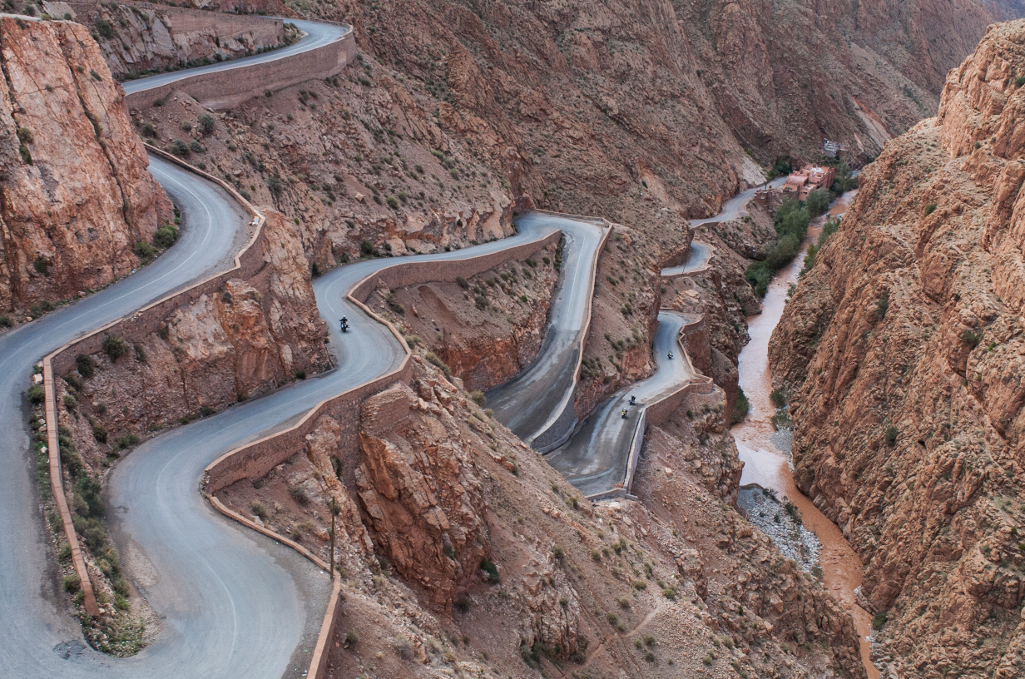
Morocco
Numbers Game
To circumnavigate the globe in record time, you’ll likely need:
8,500,000 Forints – the budget you should have for the ball-breaking challenge
9650km – highest mileage from a rear tyre (Conti Road Attack)
2171 litres of petrol
800 gear changes per day across India
200 gear changes per day on isolated roads away from civilization
114 petrol stops
98 – highest fuel octane (including Hungary)
81 – lowest fuel octane (India)
48 C° – highest temperature Nick has experienced during a record-breaking ride (Hyderabad area of India)
4 x 15-minute naps per day is what you should be aiming at. You can take a longer four-hour nap on the fifth day
3.5 mins – fastest fuel stop with an empty tank – from arriving to leaving a petrol station
3 front tyres, 4 rear (Nick’s never had a puncture!)
2 bike services
2 sets of brake pads
1 tablet computer for social media
1 video camera – recording 24/7helps authenticate the trip and helps you make money when you make a movie of your adventures afterwards
0 C° – lowest temperature Nick has experienced (Victoria, Australia)
0 tools (to save weight)
0 music (too distracting)

